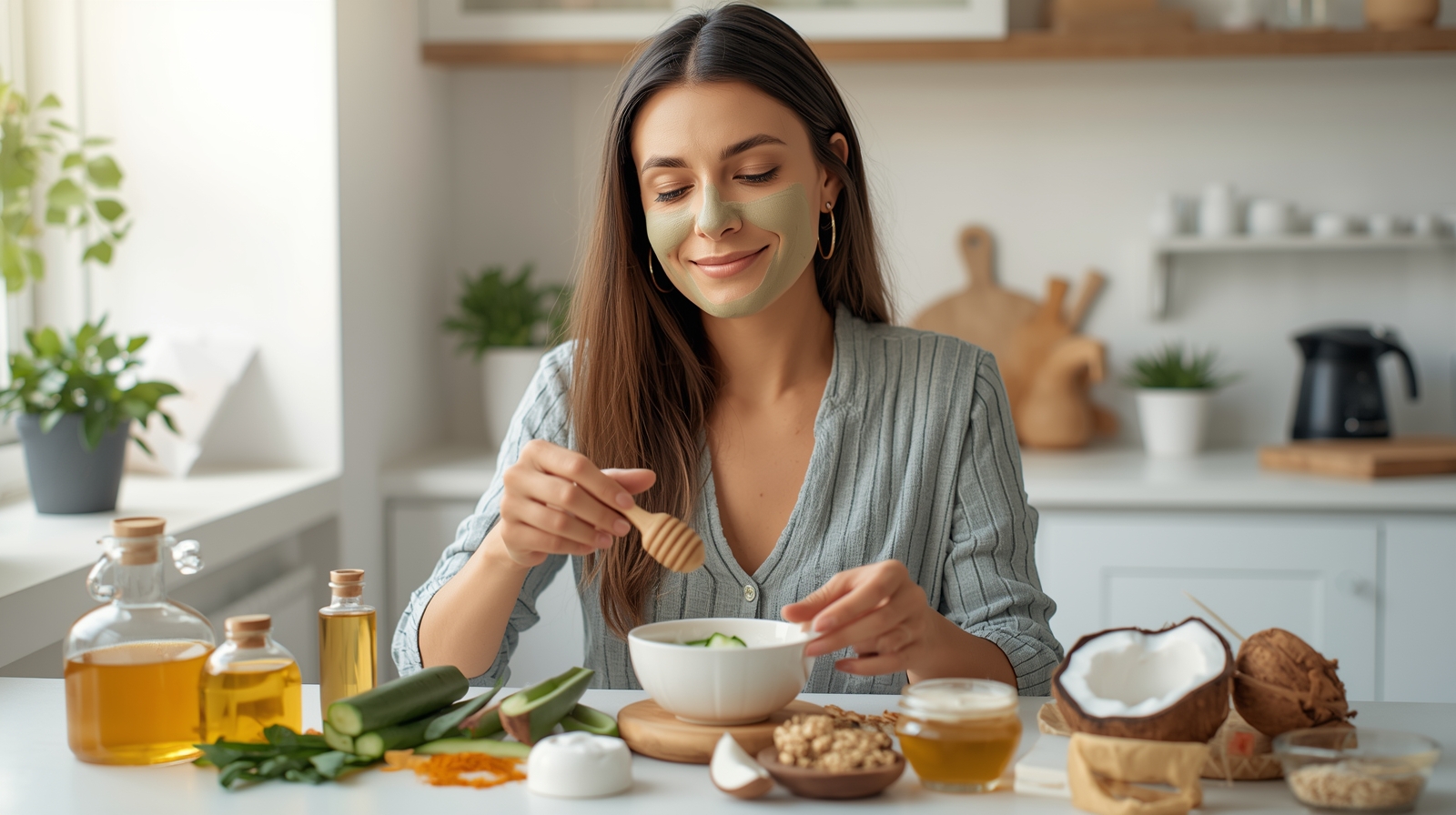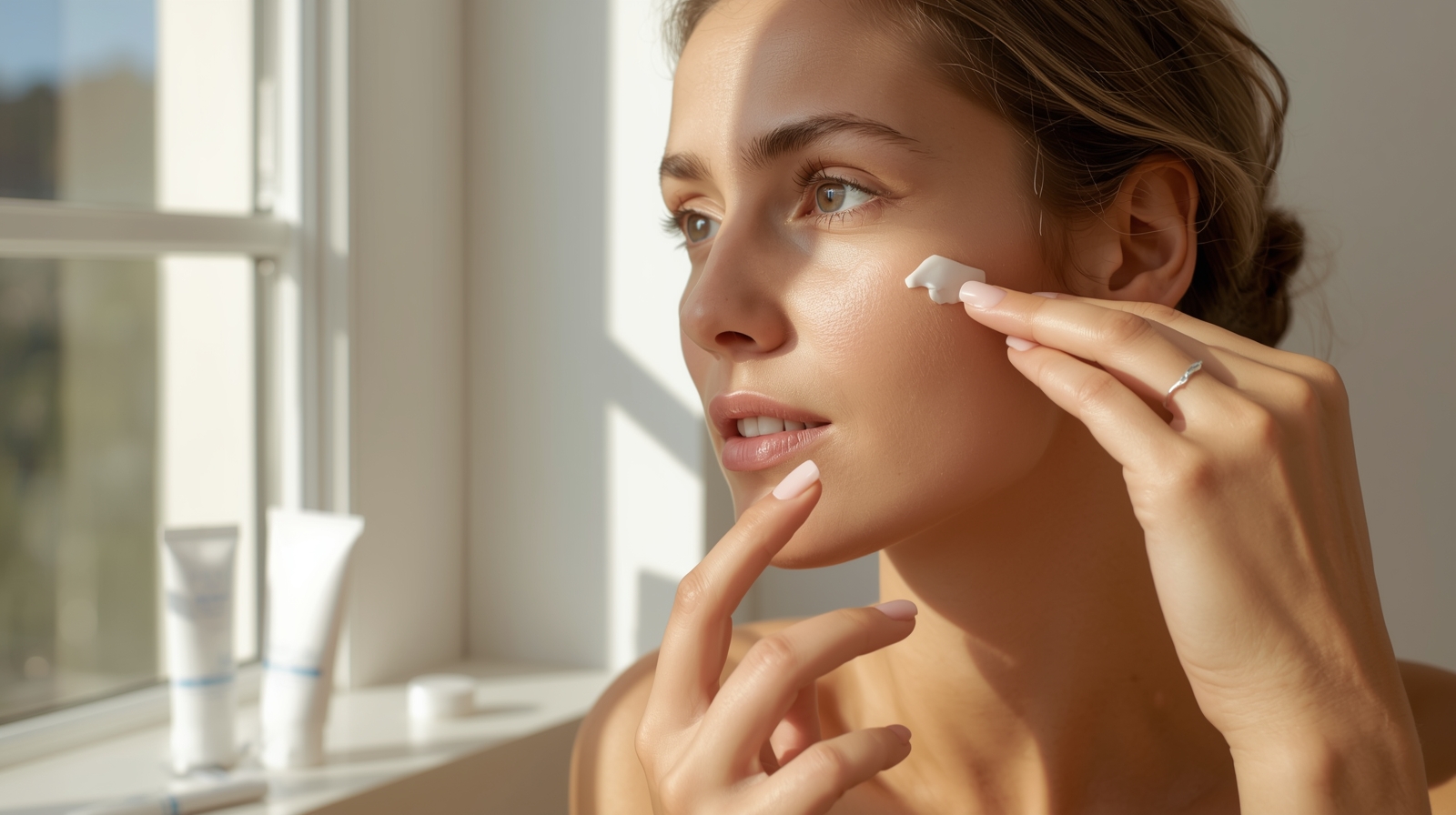Many people want healthy, glowing skin but do not always have time or access to professional treatments. Natural ingredients found in the kitchen or local stores can help maintain and improve skin condition. These ingredients support hydration, cleansing, and renewal through simple routines that can be done at home.
This guide explains effective natural ingredients, how they work, and how to use them safely. It also covers recipes, usage frequency, and important precautions to help maintain consistent skincare habits without relying on synthetic formulas.
Section 1: Why Natural Skincare Matters
Natural skincare focuses on plant-based and food-derived ingredients that work in harmony with the skin’s natural barrier. Many of these ingredients contain essential nutrients like vitamins, fatty acids, enzymes, and antioxidants that support the skin’s renewal process.
Using natural ingredients allows for a more controlled and customizable approach. It also reduces unnecessary exposure to harsh chemicals. However, it is important to test ingredients for allergies and to maintain consistency for visible results.
Section 2: Understanding How Natural Ingredients Work
Natural skincare ingredients help the skin by:
- Cleansing – removing dirt and excess oil.
- Exfoliating – removing dead skin cells for better renewal.
- Moisturizing – restoring hydration and maintaining barrier function.
- Nourishing – supplying vitamins and minerals.
- Protecting – providing antioxidants against free radicals.
Each ingredient works differently, so choosing the right one for your skin type is important.
Section 3: Honey – A Natural Humectant
Honey has natural humectant properties that draw moisture into the skin. It also contains small amounts of enzymes that help remove debris from pores.
How to use:
- Cleanse your face with warm water.
- Apply a thin layer of raw honey evenly across the face.
- Leave it on for 10–15 minutes.
- Rinse with lukewarm water.
Use two to three times a week for moisture balance.
Benefits:
- Hydration
- Gentle cleansing
- Mild exfoliation
Honey can also be added to face masks with yogurt or oatmeal for extra nourishment.
Section 4: Aloe Vera – Soothing and Hydrating Plant Gel
Aloe vera is known for its ability to calm and hydrate the skin. It contains enzymes and vitamins that support healing and smoothness.
How to use:
- Extract fresh aloe gel from the plant or use a pure aloe product.
- Apply to clean skin.
- Leave for 10–20 minutes.
- Rinse with cool water.
Apply daily or as needed after sun exposure.
Benefits:
- Cooling and soothing effect
- Supports skin renewal
- Hydration without greasiness
Section 5: Turmeric – Traditional Brightening Ingredient
Turmeric is widely used in natural skincare for its anti-inflammatory and brightening properties. It contains curcumin, which helps improve uneven skin tone.
How to use:
- Mix one teaspoon of turmeric powder with two tablespoons of yogurt or honey.
- Apply evenly to the face.
- Leave for 10 minutes.
- Rinse well with lukewarm water.
Use once or twice weekly to avoid staining.
Benefits:
- Balances skin tone
- Reduces dullness
- Promotes natural glow
Avoid using turmeric directly on the skin without mixing it with a base ingredient.
Section 6: Oatmeal – Gentle Natural Exfoliant
Oatmeal helps remove dead skin cells while maintaining the skin barrier. It contains beta-glucan, which helps with moisture retention.
How to use:
- Grind oatmeal into a fine powder.
- Mix with water or milk to form a paste.
- Massage gently onto skin in circular motions.
- Rinse with lukewarm water.
Use two times per week.
Benefits:
- Mild exfoliation
- Moisture retention
- Suitable for sensitive skin
Section 7: Coconut Oil – Deep Moisturizer
Coconut oil contains natural fatty acids that help restore hydration. It can be used as a night moisturizer or makeup remover.
How to use:
- Warm a small amount between palms.
- Apply to dry skin or use as a cleanser.
- Leave on for 10 minutes, then rinse if desired.
Use sparingly if prone to acne.
Benefits:
- Moisturizing
- Protective layer
- Natural cleansing oil
Section 8: Cucumber – Cooling and Refreshing Ingredient
Cucumber has high water content and contains compounds that refresh and soothe the skin.
How to use:
- Blend cucumber into a paste or juice.
- Apply to clean skin using a cotton pad.
- Leave for 15 minutes, then rinse.
Use daily or after sun exposure.
Benefits:
- Cooling
- Hydration
- Brightening effect
Section 9: Lemon Juice – Natural Astringent (Use With Caution)
Lemon contains vitamin C and acts as a natural astringent, but it can be irritating if used directly.
How to use:
- Dilute lemon juice with equal parts water or honey.
- Apply with a cotton pad.
- Leave for 5 minutes, then rinse thoroughly.
Use only once weekly. Avoid sun exposure immediately after use.
Benefits:
- Helps reduce excess oil
- Supports clarity
- Brightens complexion
Always patch-test before applying to the full face.
Section 10: Green Tea – Antioxidant Power
Green tea is rich in antioxidants and supports the skin’s defense against free radicals.
How to use:
- Brew green tea and let it cool.
- Apply the tea with a cotton pad or spray bottle.
- Let it air dry before applying moisturizer.
Use daily as a toner or refreshing mist.
Benefits:
- Protects against environmental stress
- Balances oil production
- Supports skin texture
Section 11: Yogurt – Natural Lactic Acid Source
Yogurt contains lactic acid, which gently removes dead skin cells while hydrating.
How to use:
- Apply plain yogurt directly to clean skin.
- Leave for 10–15 minutes.
- Rinse with lukewarm water.
Use once or twice weekly.
Benefits:
- Gentle exfoliation
- Smoother texture
- Hydration
Yogurt can also be combined with honey or turmeric for multi-purpose masks.
Section 12: Rose Water – Balancing Natural Toner
Rose water is a natural toner that helps balance pH and refresh the skin.
How to use:
- Spray directly on the face after cleansing.
- Let it air dry.
- Follow with moisturizer.
Use morning and evening.
Benefits:
- Balances pH
- Refreshes skin
- Soothing effect
Section 13: Papaya – Enzymatic Exfoliation
Papaya contains papain enzyme, which helps remove dead cells and renew skin.
How to use:
- Mash ripe papaya into a smooth paste.
- Apply to the face for 10–15 minutes.
- Rinse with cool water.
Use once weekly.
Benefits:
- Enzyme-based exfoliation
- Smoother surface
- Natural glow
Section 14: Avocado – Natural Nourishment Source
Avocado contains natural oils, vitamins, and minerals that help nourish dry skin.
How to use:
- Mash half an avocado.
- Mix with honey or yogurt.
- Apply to face for 15 minutes.
- Rinse with lukewarm water.
Use once weekly.
Benefits:
- Deep nourishment
- Hydration
- Barrier support
Section 15: Potato Juice – Skin Brightening
Potato contains natural enzymes and vitamin C that help improve uneven skin tone.
How to use:
- Grate raw potato and squeeze out the juice.
- Apply with a cotton pad.
- Leave for 10 minutes, then rinse.
Use two times per week.
Benefits:
- Reduces dullness
- Balances tone
- Natural clarity
Section 16: Rice Water – Traditional Skin Cleanser
Rice water has been used in many cultures for skin care. It contains amino acids and vitamins that help maintain smooth texture.
How to use:
- Rinse rice and soak it in clean water for 30 minutes.
- Strain and store the water.
- Use as a toner or final rinse.
Use daily.
Benefits:
- Softens skin
- Smooth texture
- Natural cleansing action
Section 17: DIY Natural Face Masks
1. Hydrating Mask
- Honey + Aloe Vera + Yogurt
Mix and apply for 15 minutes.
2. Exfoliating Mask
- Oatmeal + Yogurt + Turmeric
Massage gently and rinse after 10 minutes.
3. Oil Control Mask
- Multani Mitti (Fuller’s Earth) + Rose Water + Lemon
Apply for 10 minutes and rinse when dry.
4. Brightening Mask
- Papaya + Honey + Lemon (diluted)
Use once weekly.
These masks can be adjusted based on skin type.
Section 18: Common Mistakes in Natural Skincare
- Overusing ingredients like lemon or turmeric.
- Mixing too many active ingredients.
- Skipping patch tests.
- Expecting instant results.
- Not maintaining a regular routine.
Consistency and observation are key in natural skincare.
Section 19: Patch Testing and Safety
Always patch-test any new ingredient:
- Apply to a small area of the inner arm.
- Wait 24 hours.
- Check for redness or irritation.
If no reaction occurs, it is safe to apply to the face. Avoid using harsh natural acids too often.
Section 20: How to Build a Natural Skincare Routine
- Cleanse: Use honey or oatmeal.
- Tone: Apply rose water or green tea.
- Treat: Use turmeric, aloe, or papaya mask.
- Moisturize: Apply coconut oil or aloe gel.
This can be adjusted for morning and night routines.
Section 21: Long-Term Benefits of Natural Ingredients
With consistent use, natural skincare helps maintain hydration, smooth texture, and an even tone. It supports the skin’s natural functions and reduces reliance on synthetic formulas.
The effects are gradual but sustainable, supporting long-term skin balance.
Section 22: When to Seek Professional Help
If you have persistent acne, hyperpigmentation, or sensitivity, consult a dermatologist. Natural remedies can support but not replace professional treatment in severe cases.
A professional can guide ingredient selection based on skin type and needs.
Section 23: Maintaining Hygiene and Storage
- Store DIY mixes in airtight containers.
- Use fresh ingredients each time.
- Keep natural products in the refrigerator if needed.
- Wash hands and tools before use.
Proper hygiene prevents bacterial growth and maintains product quality.
Section 24: Diet and Lifestyle Support
Healthy skin also depends on internal habits.
- Drink enough water.
- Eat fresh fruits and vegetables.
- Avoid excess sugar and processed food.
- Get sufficient sleep.
- Manage stress with exercise or meditation.
These habits enhance the effects of natural skincare.
Section 25: Building a Weekly Schedule
Monday: Honey mask
Wednesday: Oatmeal exfoliation
Friday: Turmeric or papaya mask
Sunday: Coconut oil overnight moisture treatment
Following a consistent plan helps maintain skin health and balance.



